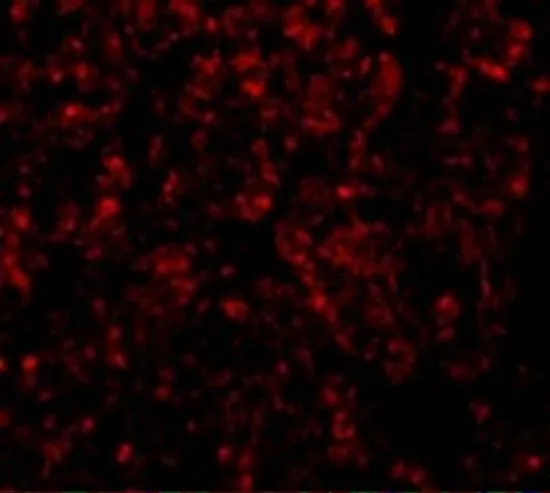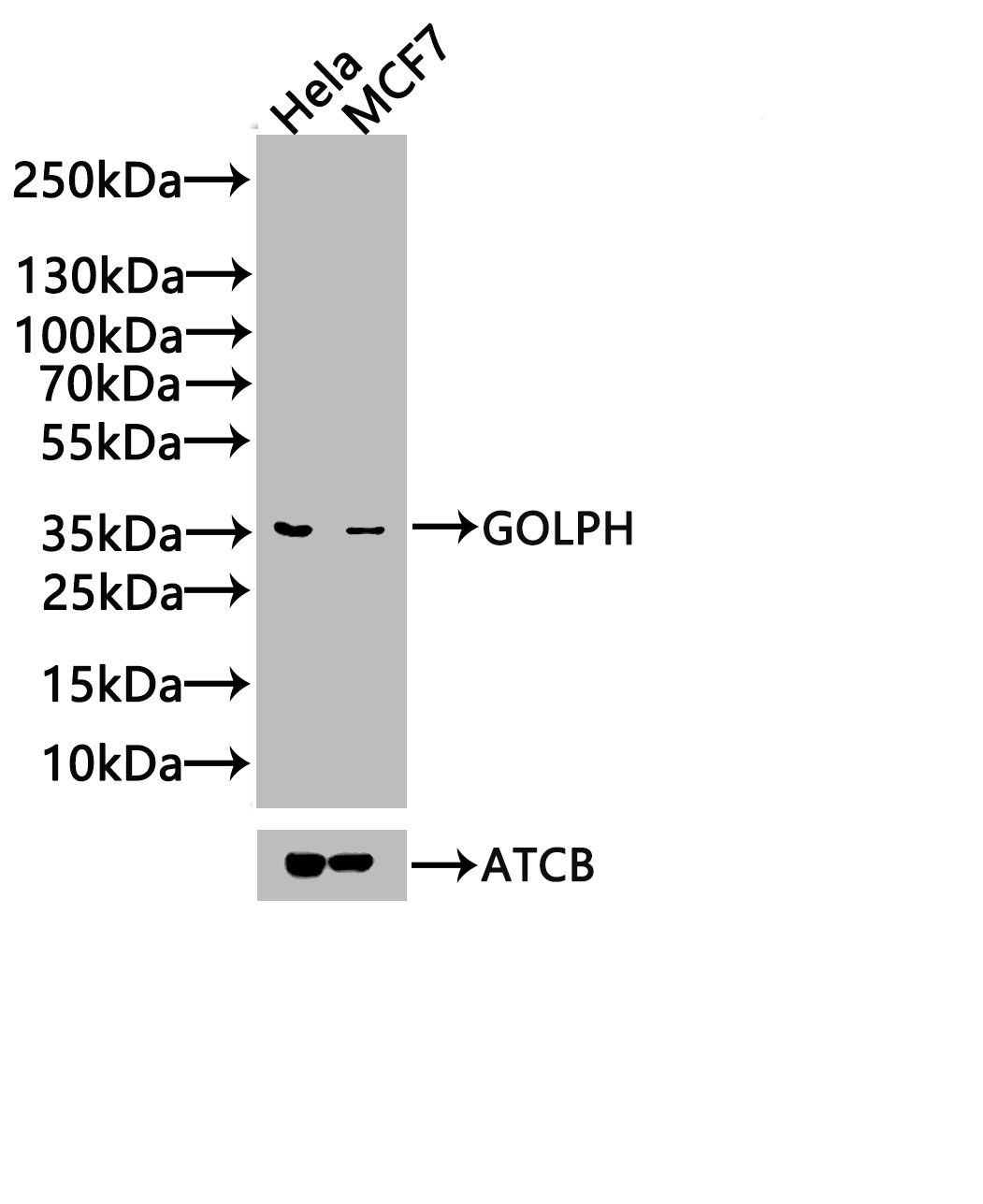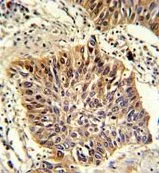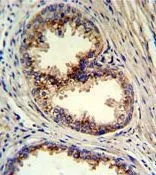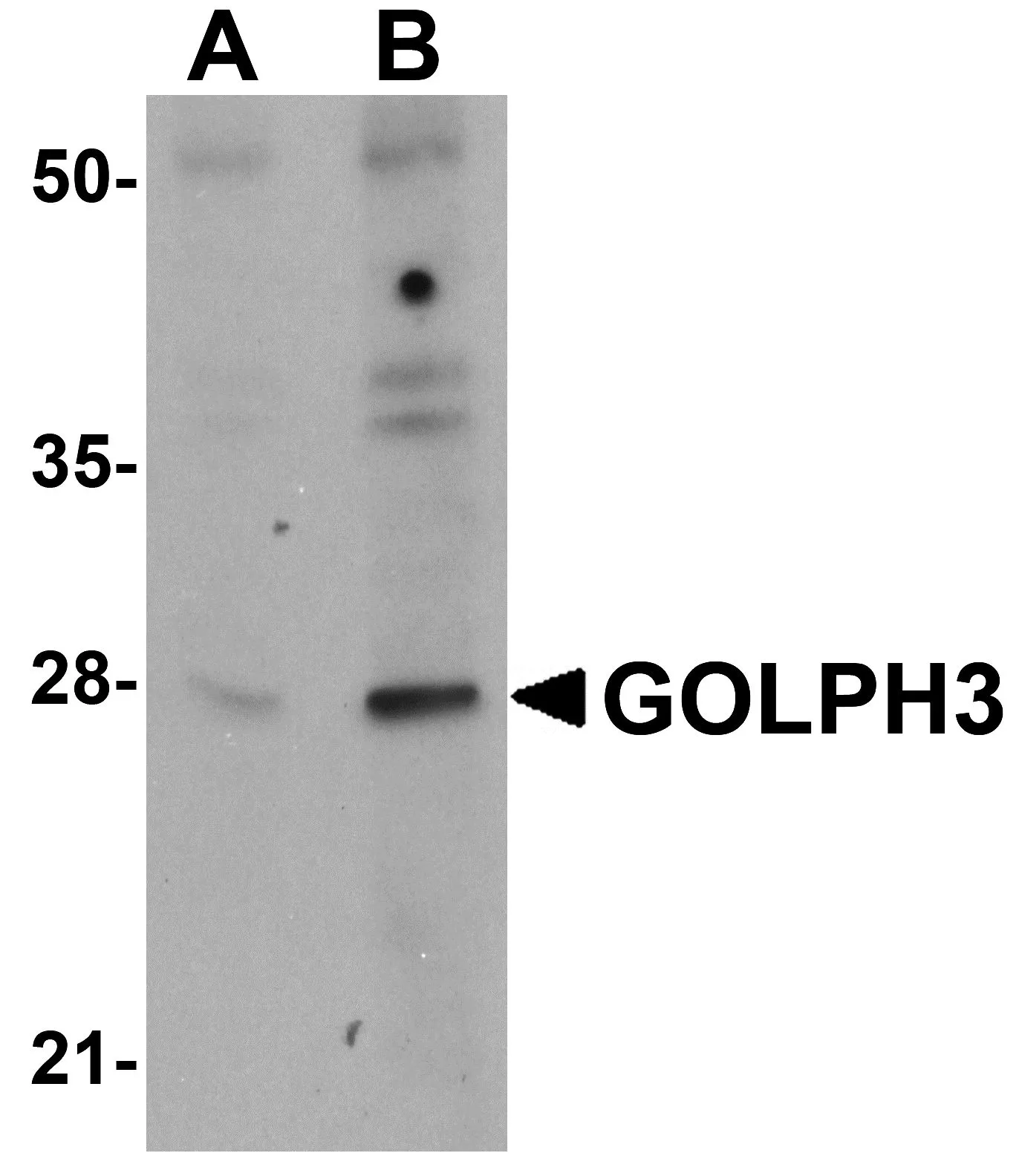
WB analysis of rat lung tissue lysate using GTX85238 GOLPH3 antibody. Dilution : 0.5microg/ml (Lane A) and 1 microg/ml (Lane B)
GOLPH3 antibody
GTX85238
ApplicationsWestern Blot, ELISA, ImmunoHistoChemistry, ImmunoHistoChemistry Paraffin
Product group Antibodies
TargetGOLPH3
Overview
- SupplierGeneTex
- Product NameGOLPH3 antibody
- Delivery Days Customer9
- Application Supplier NoteWB: 0.5 - 1 microg/mL. IHC-P: 20 microg/mL. *Optimal dilutions/concentrations should be determined by the researcher.Not tested in other applications.
- ApplicationsWestern Blot, ELISA, ImmunoHistoChemistry, ImmunoHistoChemistry Paraffin
- CertificationResearch Use Only
- ClonalityPolyclonal
- Concentration1 mg/ml
- ConjugateUnconjugated
- Gene ID64083
- Target nameGOLPH3
- Target descriptiongolgi phosphoprotein 3
- Target synonymsGOPP1, GPP34, MIDAS, Vps74, Golgi phosphoprotein 3, coat protein GPP34, coat-protein, golgi peripheral membrane protein 1, 34 kDa, golgi protein, golgi-associated protein, mitochondrial DNA absence factor
- HostRabbit
- IsotypeIgG
- Protein IDQ9H4A6
- Protein NameGolgi phosphoprotein 3
- Scientific DescriptionGOLPH3 was initially identified as a peripheral membrane protein localized to the trans-Golgi network, but others reported it to be primarily a mitochondrial protein that regulated the mitochondrial mass through the regulation of the mitochondria-specific phospholipid cardiolipin. GOLPH3 has since been implicated in the target of rapamycin (TOR) signalling pathway. Its overexpression in transfected cells led to and increase in anchorage-independent growth and cell proliferation in vitro. Furthermore, GOLPH3-transfected cells enhanced S6 Kinase activity in response to growth factor stimulation by EGF. Simultaneously, AKT phosphorylation increased in these cells, while these events were abrogated in GOLPH3 siRNA treated cells compared to control cells, indicating the GOLPH3 can enhance signalling through TOR-associated complexes. These results suggest that GOLPH3 is a bona fide oncogene and may be a useful target for therapeutic strategies.
- Storage Instruction-20°C or -80°C,2°C to 8°C
- UNSPSC12352203

